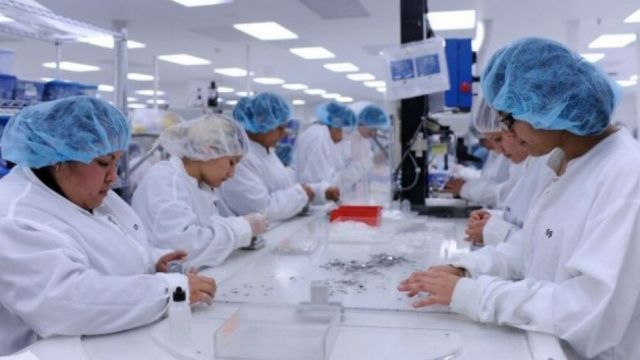Manufacturers of medical supplies have to follow rigorous worldwide standards in the fast-paced, highly regulated environment to guarantee their products are safe, effective, and premium. Medical systems all around depend on gloves and syringes as well as masks and bandages. These products are under strict rules by several worldwide agencies in order to guarantee public safety and health. Emphasizing compliance, safety rules, and quality control, this paper explores how these laws affect the production of medical goods.
1. Key Global Regulatory Bodies for Medical Supplies
Establishing the guidelines for medical supplies, several worldwide regulatory authorities guarantee that goods satisfy the required safety and quality criteria:
- The U.S. Food and Drug Administration (FDA) – Oversees the safety and efficacy of medical supplies sold in the United States.
- European Medicines Agency (EMA) – Provides regulations for medical supplies in the European Union.
- World Health Organization (WHO) – Works to ensure that medical supplies meet international safety and effectiveness standards.
- Health Canada – Regulates medical supplies within Canada.
- Australia’s Therapeutic Goods Administration (TGA) – Governs medical supplies in Australia.
Before their items may be sold in each of their separate areas, manufacturers must satisfy criteria set by these bodies. Products including gloves, face masks, and syringes, for instance, have to follow specific biocompatibility and sterilizing guidelines established by these organizations.
2. Regulatory Standards for Product Safety and Effectiveness

The effectiveness and safety of medical supplies depend much on global rules. Manufacturers have to satisfy particular material criteria, for example, so making sure the components used in medical products do not endanger people.
For example:
- Sterilization: Many medical supplies such as surgical gloves, syringes, and wound care products must undergo a sterilization process to eliminate any risk of contamination. Regulatory bodies like the FDA and ISO provide guidelines for sterilization methods (e.g., ethylene oxide, gamma radiation) and validate them as safe and effective.
- Biocompatibility: Materials used in medical supplies must meet biocompatibility standards to ensure they do not cause adverse reactions when they come into contact with the human body. The ISO 10993 standard, for example, outlines the requirements for testing medical device materials for safety.
3. Impact on Production and Manufacturing Processes
Medical supply manufacturers have to put quality management systems (QMS) compliant with FDA’s Quality System Regulations (QSR) and ISO 13485 into use. These criteria assist to guarantee that the manufacturing techniques stay constant and generate safe, premium goods.
Key impacts include:
- Controlled Manufacturing Environments: Regulatory guidelines require the production of medical supplies to be carried out in cleanroom environments to prevent contamination.
- Quality Assurance and Testing: Manufacturers are obligated to conduct extensive quality control and testing on their medical supplies. For example, gloves must undergo pressure and durability testing, while masks must be tested for filtration efficiency.
- Documentation and Traceability: Manufacturers must maintain detailed records of production processes, from raw material sourcing to final packaging. This ensures traceability in case of product recalls or safety issues.
You may like this: The Evolution of Medical Supplies: A Look Back at the Last Decade
4. Compliance and Certification for Market Entry
To be on worldwide markets, medical supply companies have to get the required certifications. Manufacturers in the European Union, for instance, have to affix the CE mark on their goods, so indicating adherence to EU health and safety rules. In the United States, too, products must pass FDA approval before they may be sold.
To show that the medical supplies satisfy the safety and performance criteria of the regulatory authorities, the certification process entails turning in technical documentation and occasionally clinical data. This can be a lengthy and expensive process, but it is essential for ensuring public trust and product reliability.
5. The Role of Sustainability and Environmental Regulations
Sustainability is becoming increasingly important in medical supply manufacturing. Global regulations are beginning to address the environmental impact of medical products. Manufacturers must find ways to reduce waste, minimize the use of harmful chemicals, and ensure that their products are recyclable or biodegradable wherever possible.
For instance, regulations like EU RoHS (Restriction of Hazardous Substances) are driving manufacturers to reduce the use of hazardous substances in medical supply production, while initiatives to promote eco-friendly packaging and sustainable materials are also on the rise.
6. The Challenges of Global Compliance
While global regulations are crucial for maintaining the safety and quality of medical supplies, they can also create challenges for manufacturers. For example:
- Complexity in Compliance: Navigating the different regulatory requirements across countries can be time-consuming and complex, requiring manufacturers to develop tailored strategies for each market.
- Regulatory Delays: The approval process for medical supplies can delay the time it takes to bring new products to market, affecting the availability of critical supplies.
- Costs: Compliance with global regulations involves significant costs for testing, certification, and ongoing audits.
Despite these challenges, complying with global regulations is necessary to ensure that medical supplies meet the highest safety and quality standards.
You may like this: Top Innovations in Medical Supplies You Need to Know in 2025
Conclusion
Global regulations are essential in the medical supply manufacturing industry to ensure product safety, effectiveness, and quality. While the regulatory landscape can be complex and challenging to navigate, adherence to these regulations is critical for manufacturers to provide safe, reliable medical products to healthcare providers and patients worldwide. By staying informed about evolving regulatory requirements and implementing rigorous quality management systems, manufacturers can maintain compliance and contribute to the overall safety and well-being of patients.
At J & J Supplies, we are dedicated to keeping you updated on the latest developments in medical supplies, clinical engineering, and manufacturing regulations. Stay ahead of the curve with expert insights, industry news, and best practices. Join our community to receive timely updates and valuable resources on medical supply compliance and innovations.








